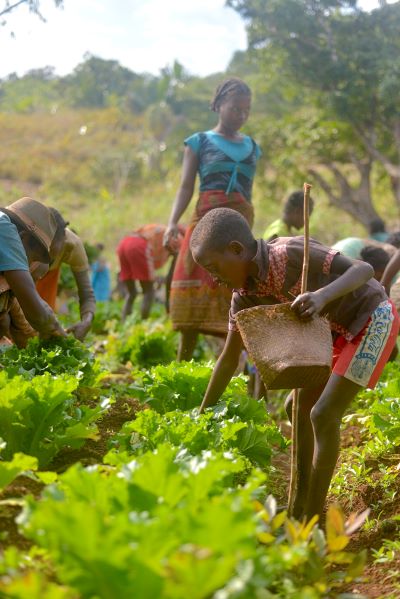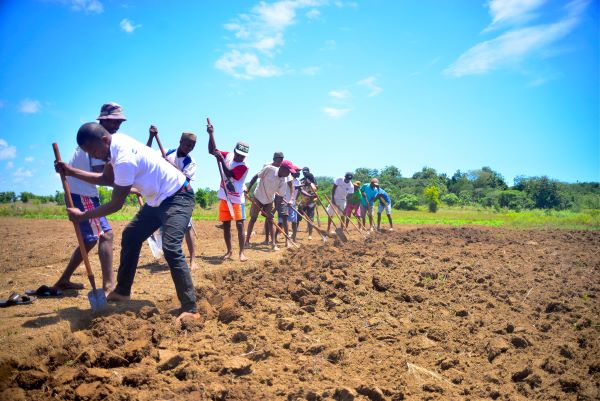By Zablon Oyugi
Health In Harmony (HIH), an international nonprofit organisation through its community-designed solutions approach has introduced sustainable farming practices among local farmers and reduce reliance on logging for income further easing pressure off Madagascar’s Manombo Rainforest.
Located in southeastern Madagascar and south of Farafangana Town, the Manombo Rainforest has faced a high rate of deforestation due to swidden agriculture and logging for livelihood by local surrounding communities.
According to Mahardika “Dika” Putra Purba, HIH conservation program consultant, the organisation started working in Madagascar’s Manombo Rainforest in 2019 following a successful 10-year pilot in the Gunung Palung National Park in Indonesian Borneo where HIH’s Radical Listening approach and investments in community-designed solutions for forest regeneration reduced forest loss by 70 per cent and reduced by 90 per cent the number of families reliant on logging for their primary livelihood.
“We decided to expand the model to Manombo where we first started meeting with village leaders through radical listening sessions across all 31 villages and realized that organic farming, food security, livelihoods, healthcare and education were their solutions to deforestation,” said Dika .

This would be the beginning of a life-changing journey that kicked off with HIH committing to invest in these community-designed solutions by signing reciprocity agreements with village elders to affirm that their communities would commit to forest protection in return.
Training farmers
According to Dika, training for families in climate-adaptive farming practices around the forest is a key intervention to build families’ capacities and enable them to constantly adapt and innovate sustainable farming techniques to improve their production and income.
“Our technicians have been trained on agroecology and agroforestry practices from the CEFFEL Training Center, Madagascar’s renowned training center for sustainable agriculture. These experts then work with local farmers, training them on the best farm production approaches,” he said.
Other than agroecology and agroforestry, the farmers are also taken through organic farming practices that include production technique curricula, water management and sustainable livelihoods training.
The trainers also showed communities how to make fertilizer using a mix of dead plants and dung from zebu, a type of cattle domesticated by locals.
However, due to insecurity, zebus are often stolen by the neighboring tribes, reducing the amount of manure used in the fields.
HIH has also developed a regenerative agriculture approach to help locals renew soil by incorporating crop rotation and use of biomass to produce composts and biopesticides that encourage microorganisms back into the soil.
“The regenerative agriculture approach enables farmers to understand how the ecosystem works and to stop extensive cropping practices that could rapidly deplete soil nutrients,” Dika said.

Other practices include terracing and mulching methods and introduction of leguminous and grass-based cover crops to improve nutrient supply and retention.
“Since the intervention of agricultural training and support via HIH’s team, soil fertility in Manombo communities has improved harmonization between nature and humans,” he said.
New improved crop varieties
According to HIH Conservation Manager Sedera Ramaromanana, for a long time the local communities have grown food crops such as rice, cassava, sweet potatoes and yams varieties and have not been productive.
However, since 2021, HIH has been progressively introducing new improved food crop varieties that are more productive in the short term and resilient to climatic conditions.
These include ‘Irene’, ‘Donga’ and ‘Gloria’ sweet potato varieties with a 3-month cycle, ‘Milaka X 265’ and ‘Mihary’ rice varieties with 3-month production cycle, ‘Red marbled’ bean variety and a hybrid cassava variety that adapts well to the climate and is also very productive.
The organisation says sweet potatoes varieties were developed by the International Potato Center (CIP), but were introduced to the region by Welthungerhilfe (WHH), a nongovernmental organization in 2022 while rice and beans are seeds produced by FOFIFA Madagascar, an internationally renowned research center in the country.
Impact
Thanks to the contribution of short-cycle seeds and improved techniques, harvest frequency, production, and nutrient-dense diets have increased.
For instance, sweet potatoes are harvested in three months rather than nine, and rice is harvested two to three times a year, rather than once every eight months.
In one village, HIH replaced the leaky wood in an irrigation channel with concrete, a move that helped protect rice paddies during a severe drought last year.
“Also, since the program’s inception in 2020, 2,285 participants, including 1,626 women and 19 villages, have benefited from training in HIH field schools with such schools set in 13 villages around the forest,” said Ramaromanana.
Future
Starting this year, the organisation will implement training courses in beekeeping and fish farming. There are also plans to offer training in poultry farming and market research for agricultural products from next year by HIH.
“Following the success of the program in Manombo so far, we have plans to extend interventions to the district of Ikongo, located in the center-east of Madagascar,” Dika said.









